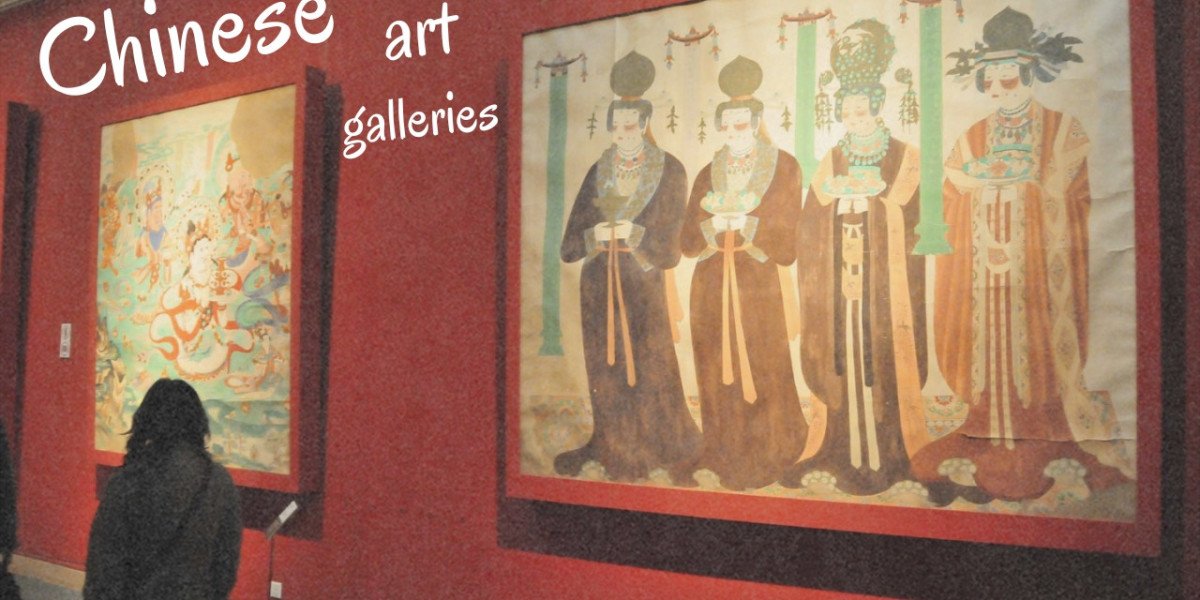Chinese art galleries play a significant role in showcasing the rich cultural heritage and artistic evolution of China. They serve as a bridge connecting ancient traditions with modern interpretations, offering art enthusiasts from around the world a chance to experience the depth and diversity of Chinese art. With their carefully curated collections, these galleries highlight everything from traditional ink paintings to contemporary sculptures, providing an insight into China’s historical and modern-day artistic landscape.
The essence of Chinese art lies in its unique philosophy, deeply rooted in harmony with nature, spirituality, and expression. Chinese art galleries emphasize this by preserving and exhibiting works that reflect these values. They often display a variety of mediums, including calligraphy, landscape paintings, ceramics, and even intricate jade carvings. Each of these forms tells a story about the region’s history, beliefs, and the evolution of its society.
A Journey Through Tradition
Chinese art galleries are not just spaces for visual appreciation; they are educational hubs that narrate China’s artistic journey. Traditional Chinese art forms, such as landscape painting (shanshui), are often the centerpiece of these galleries. These artworks are known for their unique aesthetic, often portraying vast, tranquil sceneries filled with mountains, rivers, and mist. The philosophy behind this style reflects the harmonious relationship between humans and nature, a core tenet of traditional Chinese thought.
Calligraphy is another prominent art form frequently highlighted in these galleries. Known for its graceful strokes and deep cultural significance, Chinese calligraphy is considered a visual art form and a spiritual exercise. Galleries often showcase works from renowned calligraphers, emphasizing the evolution of characters from ancient scripts to their modern forms.
Spotlight on Regional Styles
China’s vast geographical and cultural diversity is mirrored in its art. Chinese art galleries often feature regional styles that reflect local traditions and influences. For instance, the intricate blue-and-white porcelain from Jingdezhen or the vibrant folk art from Yunnan Province brings attention to the country’s artisanal heritage. Each region’s artistic output adds a layer of complexity and richness to the narrative presented by the galleries.
Connecting the Past with the Present
Modern Chinese artists are reinterpreting traditional themes to create contemporary pieces that speak to global audiences. Chinese art galleries provide a platform for these modern interpretations, blending the old with the new. These spaces serve as incubators for creativity, where traditional techniques meet innovative ideas.
For example, contemporary artists may incorporate traditional brushwork into abstract compositions, creating pieces that are both familiar and groundbreaking. By doing so, these galleries not only preserve traditional art forms but also push their boundaries, ensuring their relevance in the global art scene.
Global Cultural Exchange
Chinese art galleries also contribute significantly to global cultural exchange. By hosting exhibitions abroad or collaborating with international galleries, they introduce Chinese art to a wider audience. This cross-cultural interaction fosters understanding and appreciation for the uniqueness of Chinese art while highlighting its universal appeal.
Galleries such as the China Art Hub focus on making Chinese painting supplies accessible to both professional and amateur artists worldwide. By doing so, they promote the practice and appreciation of Chinese art forms beyond China’s borders.
Role of Galleries in Art Preservation
Art preservation is a crucial aspect of the mission of Chinese art galleries. They house and protect invaluable historical pieces, ensuring that future generations can experience and learn from them. Restoration efforts are often undertaken to maintain the integrity of fragile artworks, such as ancient scrolls or delicate ceramics.
In addition to preservation, these galleries are also platforms for academic research. Scholars and historians often collaborate with galleries to study and document the history of Chinese art. This research contributes to a deeper understanding of the artistic traditions and their cultural contexts.
Educational Programs and Workshops
Many Chinese art galleries, including institutions like China Art Hub, engage with the community through educational programs and workshops. These initiatives aim to cultivate an appreciation for Chinese art among younger generations. Workshops on traditional techniques, such as brush painting and calligraphy, allow participants to experience the creative process firsthand.
By offering these educational opportunities, galleries inspire a new generation of artists and enthusiasts. They ensure that the skills and knowledge associated with traditional Chinese art are passed down and remain relevant.
Art as a Reflection of Society
Art is often a reflection of societal changes and values. Chinese art galleries offer a unique lens through which to view the country’s cultural and historical evolution. For instance, during times of political upheaval or economic change, art has served as a medium for commentary and expression. Galleries often curate exhibitions that explore these themes, offering viewers a deeper understanding of the historical context behind the artworks.
In the modern era, Chinese artists are addressing global issues such as environmental sustainability and cultural identity. These themes resonate with audiences worldwide, demonstrating the universality of art as a form of expression.
The Role of Technology
The integration of technology in Chinese art galleries has opened new avenues for engagement. Virtual tours, augmented reality installations, and digital catalogs make art more accessible to a global audience. These innovations allow people from different parts of the world to experience the beauty of Chinese art without physical barriers.
Additionally, technology enables artists to experiment with new mediums, resulting in unique, hybrid forms of art. Chinese art galleries often embrace these advancements, showcasing cutting-edge works that push the boundaries of creativity.
Supporting the Global Art Community
By collaborating with international artists and curators, Chinese art galleries contribute to a vibrant global art community. Events such as art fairs, biennales, and exhibitions foster dialogue and exchange between Chinese and global art scenes. These collaborations enrich the cultural fabric of both sides, creating opportunities for mutual learning and inspiration.
Conclusion
Chinese art galleries are vital in preserving, showcasing, and innovating the artistic traditions of China. They act as custodians of the past while simultaneously pushing the boundaries of the present. Whether through traditional ink paintings or contemporary installations, these galleries ensure that Chinese art continues to inspire and captivate audiences worldwide.
Institutions like China Art Hub are pivotal in this ecosystem, providing resources and platforms for the global art community to engage with Chinese traditions. As more people connect with Chinese art, these galleries will continue to play a central role in shaping global appreciation for this rich cultural heritage.
 AdBlock Detectado
AdBlock Detectado








